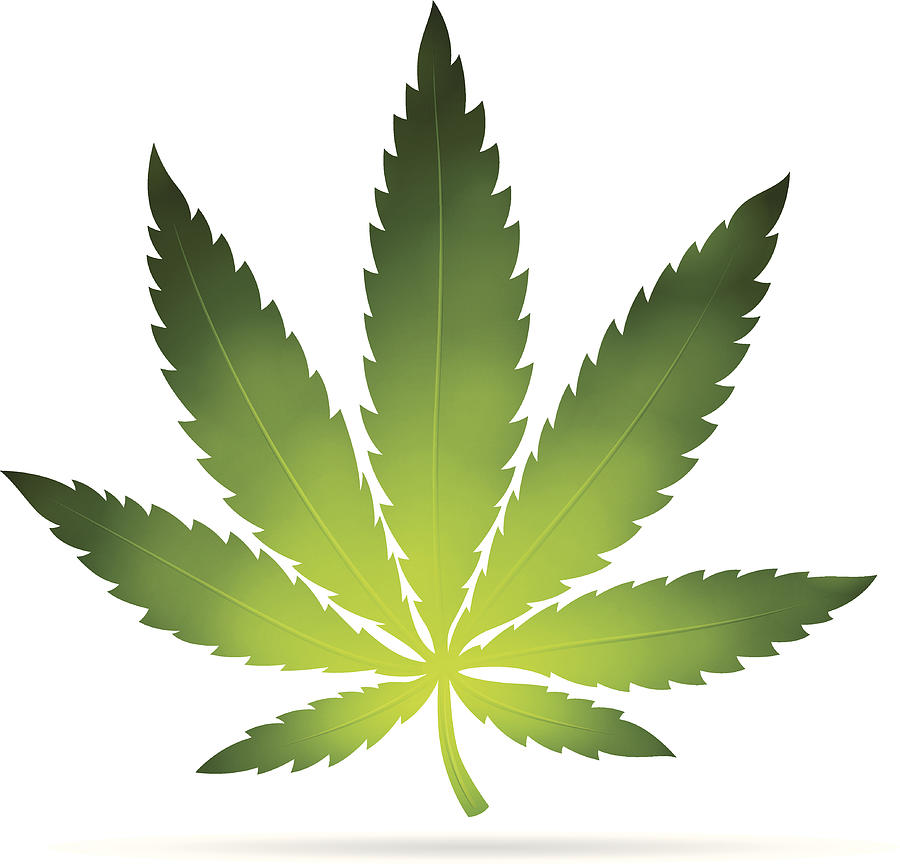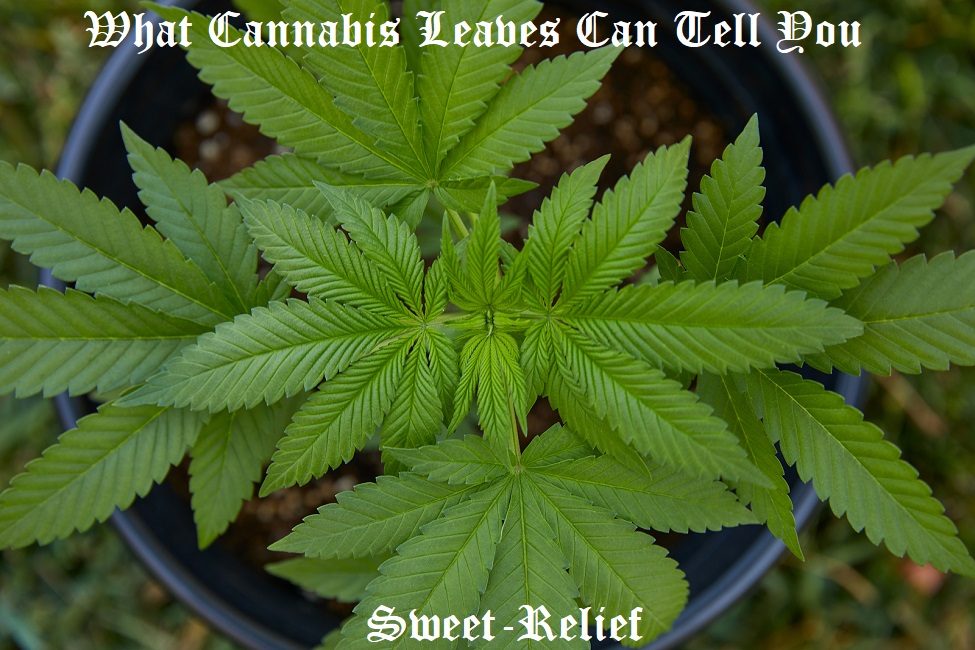Cannabis leaves can tell a great deal to the experienced gardener. Once you know what to look for, the appearance of cannabis leaves allows you to understand several important factors which affect the health of your plants. Cannabis leaves also allow you to understand the nutritional needs of your plants. If you can interpret and apply the information conveyed by the leaves you will be well on your way to becoming a more skilled and successful cannabis grower. This will allow you to increase the quality and quantity from each harvest. Read on to find out more.
The different types of cannabis leaves
Cannabis leaves are crucial to the health of your plants. Disease, over-watering, virus damage, under-feeding, pests, over feeding, mold, under-watering and many other problems can be seen on your plants leaves if you know what to look for.
Leaves contain the natural pigment called chlorophyll. This allows photosynthesis to occur in the leaves, converting light energy into chemical/biological energy for growth. On the under side of leaves are small pores called stomata. During photosynthesis these allow carbon dioxide to enter the cells as well as allowing oxygen and water vapour to escape. Cannabis leaves are remarkable pieces of multi purpose cellular technology, they can also absorb nutrients fed directly to them in a process known as foliar feeding.
The shape and structure of cannabis leaves tends to vary slightly between the different types of cannabis.
Sativa cannabis leaf appearance
Cannabis leaves grown from sativa cannabis seeds often have slimmer, more narrow leaves with slender fingers. You can see up to 13 fingers on some sativa cannabis leaves. The thin structure of sativa leaves allows light to penetrate down to lower levels. Cannabis leaves on a sativa may not be quite as dark as those on an indica, indicating lower chlorophyll levels which are thought to result in longer bloom times for sativas.
Ruderalis cannabis leaf appearance
Ruderalis leaves tend to be slim, with as little as 3-5 fingers. Some people think they resemble the leaves of sativa seedlings.
Hybrid cannabis leaf appearance
Cannabis leaves grown from hybrid cannabis seeds often display appearance characteristics from both indica and sativa leaves. With a hybrid strain, leaves are often not quite as slender/slim as a sativa. The leaves are also not quite as stubby and fat as an indica. Instead, the hybrid cannabis leaf has similarities drawn from both indica and sativa leaf shapes.
Parts of the cannabis plant

Cannabis grows in a variety of climates around the world and can be used in many applications: rope, biofuel, paper, and many medical and recreational uses. The plant is part of the Cannabaceae family, which also includes hops. It is further classified as Cannabis sativa L. Each part of the plant serves a purpose and while the whole of a cannabis plant is certainly greater than the sum of its parts, knowing its parts can inform your experience and appreciation of it. Below are descriptions of each of the plant’s parts and the functions they perform.
Flower
The flowers of the female marijuana plant can be identified by their small teardrop structures, which consist of pistils attached to bracts. Cannabis flowers are usually covered with a frosty-looking coating of trichomes, with a heavier density of trichomes making for a more desirable flower.
Cola
The main part of the flower, at the end of a female plant’s stem is composed of many small floral clusters. In general, the bigger, heavier, and more densely covered in trichomes a cola is, the better quality it will be, although some cultivars will naturally grow flowers that are more loosely structured and airy.
Bracts
The small leaves that surround the reproductive cells of a female weed plant. When a female plant is exposed to pollen from a male marijuana plant, the bracts surround and shield the seed pod.
Trichomes
Marijuana trichomes are hairlike appendages found on the surface of the cannabis plant. Trichomes protect the plant from external stressors and contain resinous glands that create flavonoids, cannabinoids and terpenes — the chemical compounds that give the marijuana plant its unique features and effects. Trichomes give cannabis buds a crystal-like sheen and make them sticky feeling.
Within the glandular trichomes, there are three main types: bulbous, capitate-sessile and capitate-stalked.
Non-glandular trichomes are called cystoliths. Bulbous trichomes are tiny bulbs that are sparsely located throughout the entire plant, but are so small they can’t be seen with the naked eye. Capitate-sessile trichomes are more abundant than bulbous trichomes, found on the underside of the sugar leaves and fan leaves, but are usually only visible through a microscope. Capitate-stalked trichomes are shaped like mushrooms and contain a large trichome head at the top of the stalk. These are the trichomes that can be easily seen on the cannabis flower surface.
Node
The point at which the stem and leaf intersect. Nodes can hold one or more leaves or offshoots. As explained below, nodes are important to be familiar with, as they are where cannabis plants begin to grow either pollen sacs (male cannabis plants) or pistils (female cannabis plants). Understanding the sex of a marijuana plant is crucial to the final product, since only female plants produce flowers and since non-pollinated flowers are far superior than pollinated buds when it comes to consumption.

Fan leaves
Leaves are important components of a weed plant, and there are actually a couple types of marijuana leaves. The large, protruding leaves that appear along the length of the plant are called fan leaves. Theses leaves are essential to the living plant’s photosynthesis, but are always removed from the finished, harvested product.
Sugar leaves
As opposed to fan leaves, sugar leaves are small leaves found throughout cannabis colas’ cupping buds that are typically trimmed off the flower after harvest. They are called “sugar leaves” because of the high volume of trichomes found on them, which makes it look like the leaves are covered in sugar. Sugar leaf trim can be used to make edibles or concentrates.
Stem
The main support structure of the marijuana plant, the stem transports fluids, nutrients, and information from the roots to the rest of the weed plant. The stem provides a foundation to give fan leaves access to the light they need to facilitate growth and carries the weight of heavy colas.
Pistils vs. stigmas
There is often a lot of confusion surrounding pistils and stigmas, with many people confusing one of the other. Here’s a quick breakdown on the difference between the two important cannabis plant components.
What is a pistil?
The pistil is the primary piece of the female flower’s reproductive system, comprising a single ovule with two protruding stigmas.
What are stigmas?
The thin hairs that extend from a female’s bract to catch male pollen. They are commonly confused with pistils. Knowing how to identify stigmas is an important part of growing weed, as these are the telltale signs that a plant is female and will therefore produce the cannabinoid-rich flowers you’re trying to harvest.
Enjoy using your cannabis leaves and trim!
We hope this article has given you a fresh insight into the roles and uses of cannabis leaves. Remember that most professional growers would never consider throwing away their cannabis leaves. With a little effort, you can turn your waste plant material into genuinely potent and hugely enjoyable cannabis concentrates.
